Hesperocyparis macrocarpa (Hartw.) Bartel
Monterey cypress
The tree tag number relates to the black tree-maintenance tags, usually fixed on the trunk, 2 to 3m above ground level.
The Monterey cypress, previously Cupressus macrocarpa, is quite rare in the wild, being known only from two coastal cliff-tops near Monterey in California from where it was introduced into cultivation in about 1838. It is widely grown in temperate areas all over the world, particularly in coastal areas as it is salt-tolerant. It is a useful wind-break tree, but not suitable for hedging or for small gardens as it can reach 40m tall.
The leaves are tightly pressed to the stem and the stems are rounded not flattened (cf the Nootkat cypress). Separate male and female cones are produced in late winter/early spring. The male cones are yellow and the female cones start a bluish green. The female cones develop into a spherical shape with 6 to 14 scales and turn brown. These take 18 months or more to ripen.
The Monterey cypress is one parent of the widely grown hybrid Leyland cypress (x Hesperotropsis leylandii) the other parent being the Nootcat cypress Callitropsis nootkatensis. This hybrid occurred in cultivation, first in Rostrevor in County Down in about 1870 and again in Leighton Hall in Powys in 1888. Most Leylands in cultivation derive from the latter cross.
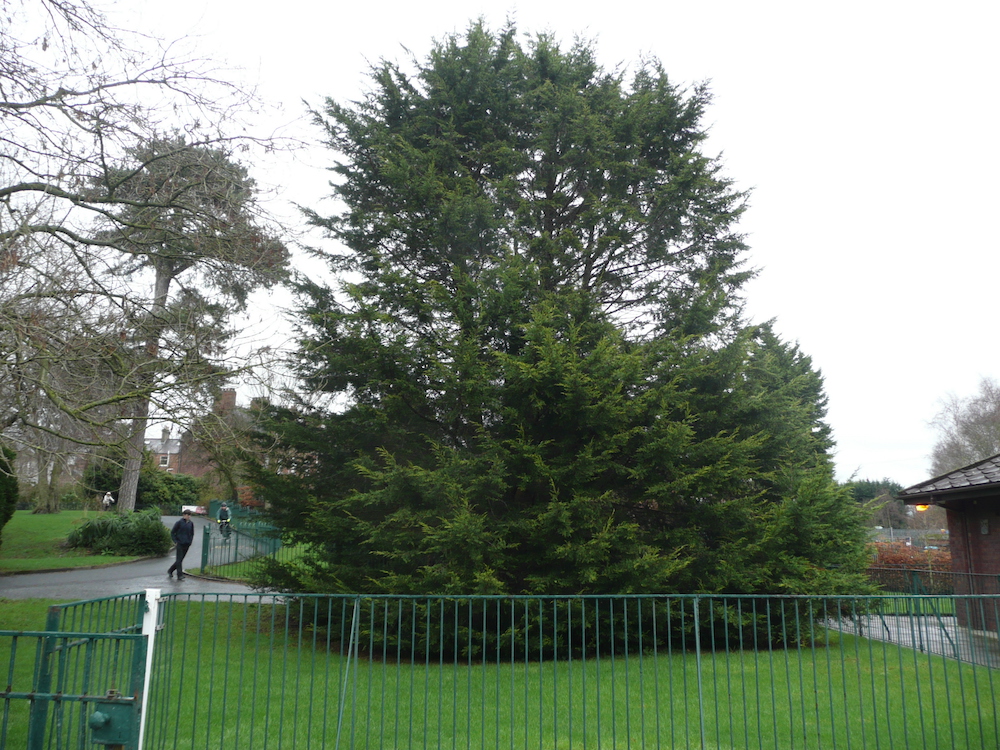
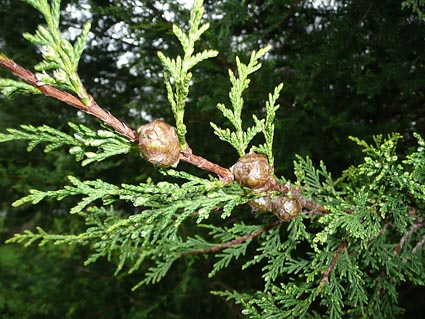
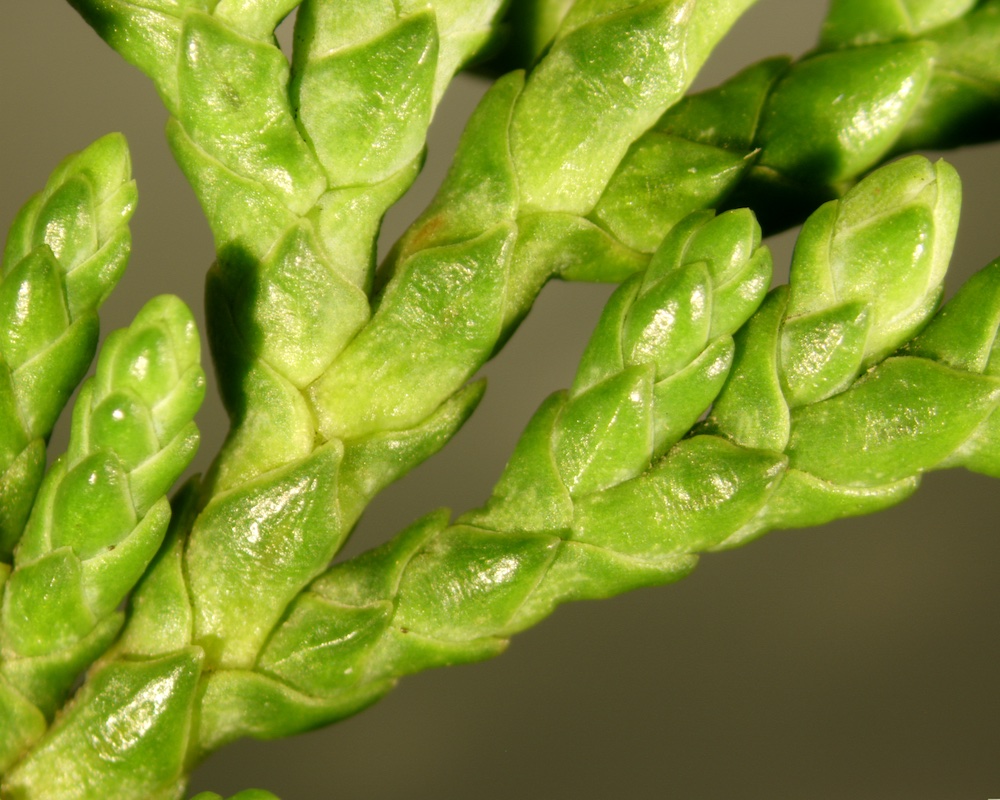
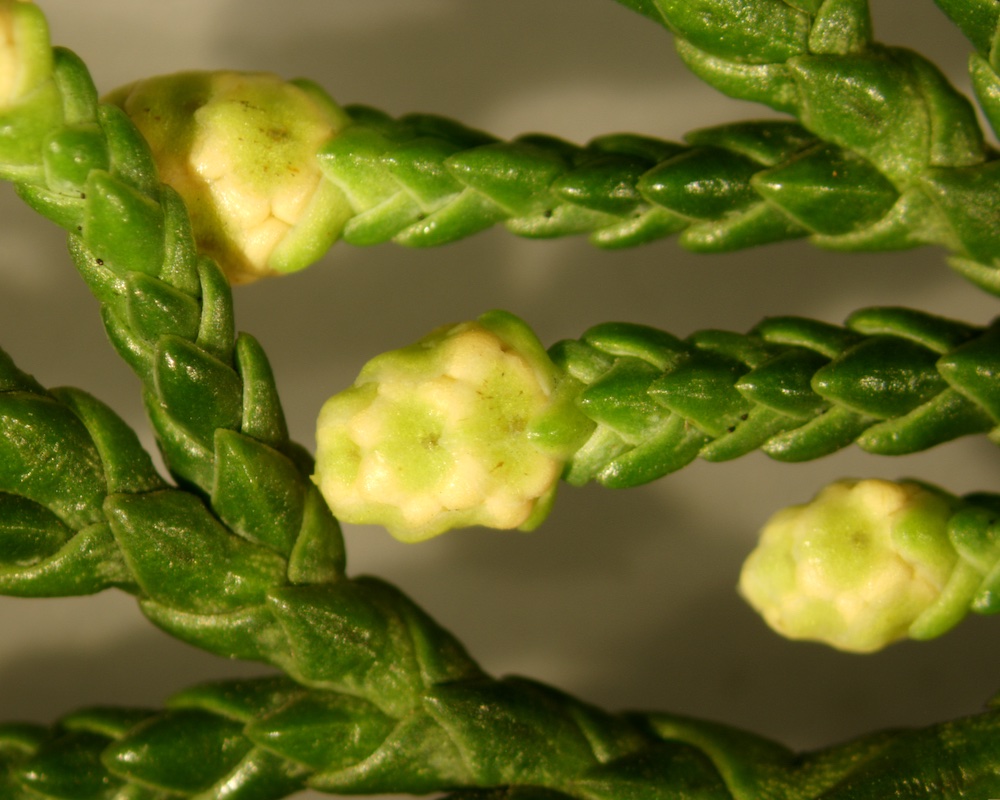

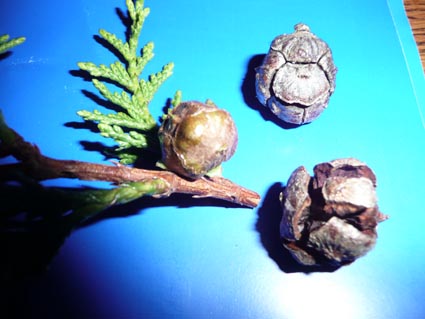

Photos taken in Belfast Botanic Gardens in 2015 and 2016. Copyright: Friends of Belfast Botanic Gardens.
